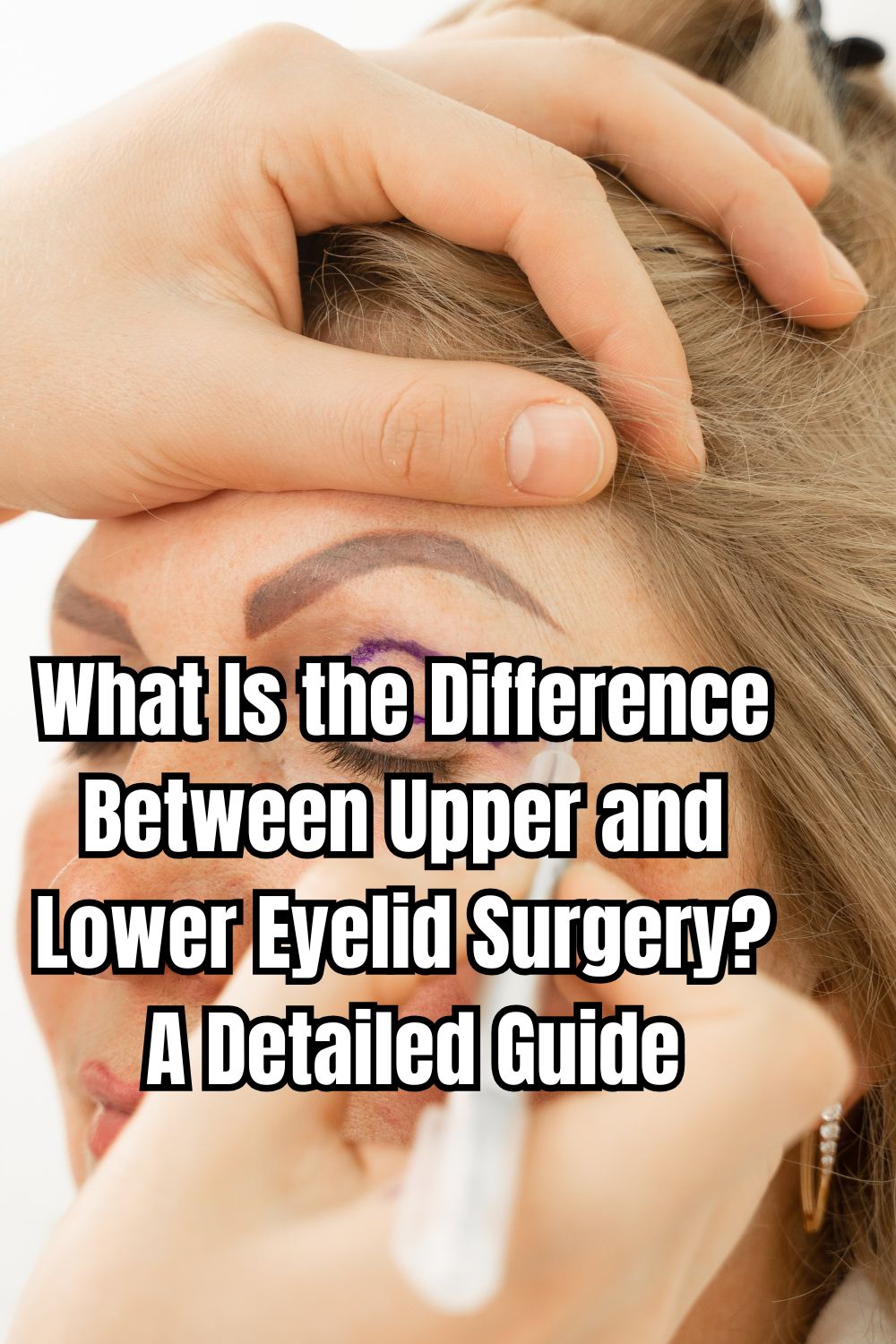What Is the Difference Between Upper and Lower Eyelid Surgery? A Detailed Guide
If you’re considering eyelid surgery to refresh your appearance, it’s important to know the difference between upper and lower eyelid surgery. Upper eyelid surgery focuses on removing excess skin and sometimes fat from the upper eyelids, while lower eyelid surgery primarily addresses issues such as bags and sagging under the eyes. By understanding these distinctions, you can make a more informed decision about which procedure might benefit you the most.
Both types of surgeries can offer significant improvements, but they target different concerns. Upper blepharoplasty can improve the look of hooded eyes, often caused by aging or genetics. On the other hand, lower blepharoplasty can help reduce puffiness and wrinkles beneath the eyes, giving you a rested and youthful appearance.
If you’re exploring these options, especially with eyelid surgery specialists in Toronto, it might be a good step to discuss your needs with a professional. For those looking for more details on a specific eyelid lift procedure, check out this article on different eyelid surgery techniques. Understanding the right approach for your needs can lead to the best results.
Fundamentals of Eyelid Surgery
Eyelid surgery, also known as blepharoplasty, involves different processes depending on whether the procedure is for the upper or lower eyelids. The focus is on removing or repositioning skin and fat to improve functionality and appearance. Understanding the anatomy of the eyelids helps in realizing the importance of each type of surgery.
Defining Upper Eyelid Surgery
Upper eyelid surgery involves making an incision in the natural crease of your upper eyelid. This makes any scarring minimal and well-hidden. The procedure typically removes excess skin or fat, which can droop or create a hooded appearance on your eyes.
If necessary, muscles may be tightened to give a more youthful look. This surgery is popular for addressing sagging skin that can impair vision and provide a more alert appearance. It targets issues like droopiness and wrinkling and is often performed for both cosmetic and functional reasons. Your doctor will assess your needs and discuss potential outcomes.
Understanding Lower Eyelid Surgery
In lower eyelid surgery or lower blepharoplasty, an incision is often made just below your lash line. This is where your natural skin creases are, so scars blend nicely over time. The goal of this surgery is to fix bagginess or puffiness under the eyes, which often happens due to aging.
Excess skin and fat are removed or repositioned to give a smoother, firmer look. This helps eliminate shadows and puffiness that might make you appear tired. Lower eyelid surgery focuses more on aesthetic improvements, although it can sometimes help with functional concerns as well. Consultation with a knowledgeable surgeon is key.
Comparative Anatomy of the Upper and Lower Eyelids
The anatomy of your upper and lower eyelids is uniquely different, influencing the surgical approach for each. The skin on the upper eyelid is more prone to sagging due to gravity and aging, while lower eyelid tissues can develop puffiness and bags.
Your upper eyelid has a crease that hides incision lines, unlike the often visible area under your lower eyelids. These differences mean techniques vary considerably and should be tailored to individual needs. Understanding these anatomical distinctions helps in choosing the right procedure. Consult with your doctor to explore which surgery would best meet your goals and address your concerns.
Considerations and Outcomes
When deciding between upper and lower eyelid surgery, you should think about both functional and cosmetic outcomes. Consider what results to expect after surgery, including the recovery process. It’s also important to know the risks and complications that might occur.
Functional and Cosmetic Considerations
Upper eyelid surgery often targets sagging skin that may block your vision. If your upper lids droop, surgery can help improve how you see by removing excess skin.
Lower eyelid surgery usually focuses on cosmetic issues like bags or puffiness under the eyes. These procedures can make your eyes look less tired and more alert. Depending on your goals—better vision or a refreshed appearance—knowing these differences will guide your choice.
Expected Results and Recovery
After upper eyelid surgery, you might notice an immediate improvement in both your sight and appearance. Lower eyelid surgery often results in smoother and tighter skin beneath the eyes.
Recovery varies but typically involves some swelling and bruising, which usually subside within two weeks. You should follow your surgeon’s post-operation care instructions carefully to ensure the best recovery. This can include using cold compresses, keeping your head elevated, and avoiding strenuous activities.
Potential Risks and Complications
Every surgery comes with risks. These could include infection, bleeding, or reaction to anesthesia for eyelid surgery. Other possible complications are dry eyes, noticeable scarring, or difficulty closing your eyes.
To reduce the risk of complications, it’s important to choose a qualified surgeon who explains the procedure well. Make sure you discuss any concerns or medical conditions beforehand to tailor the surgery to your needs.
Understanding these aspects will help you make an informed decision about whether eyelid surgery is right for you.
Conclusion
Understanding the differences between upper and lower eyelid surgeries can help you choose the best option for your needs. Upper eyelid surgery typically addresses droopy eyelids by removing excess skin and fat. In contrast, lower eyelid surgery focuses on reducing undereye bags and tightening loose skin.
Consulting with a qualified professional is important to discuss your specific goals and determine which procedure suits you best. Both surgeries can result in a refreshed and youthful appearance, improving your confidence and overall satisfaction.

Leave A Reply!